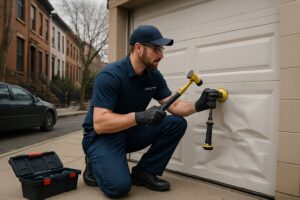Modern power systems are vast, dynamic, and incredibly complex. As power generation and consumption grow in scale and sophistication, so do the risks of faults, failures, and cascading blackouts. The first line of defense in such a high-stakes environment?Control and protection systems—designed to detect faults, isolate issues, and maintain system stability.
But simply having protection in place is not enough. Without regular, thorough testing, even the most advanced protection systems can fail silently. In this article, we explore the critical role of testing in control and protection systems, and how it safeguards the entire power network from disruption and disaster.
What Are Control and Protection Systems?
Control and protection systems are essential components of electrical infrastructure. Their job is to monitor system behavior, detect anomalies, and take predefined actions to minimize damage and restore normal conditions.
These systems include:
- Protective relays (electromechanical, digital, and numerical)
- Circuit breakers and isolators
- Supervisory Control and Data Acquisition (SCADA) systems
- Automatic voltage regulators (AVRs)
- Automation and control relays
Together, they form a digital shield that ensures faults are quickly detected and isolated to prevent widespread damage.
Why Testing Is Crucial
- Hidden Failures Can Be Catastrophic
A protection system may appear healthy but be non-functional due to relay misconfiguration, communication errors, wiring issues, or outdated firmware. Without testing, these vulnerabilities remain undetected—until a fault occurs and the system fails to respond.
- Compliance and Standards
International standards like IEC 61850, IEEE C37.103, and NERC PRC standards require routine testing of protection systems. Non-compliance can result in fines, safety hazards, and invalidated insurance claims.
- System Changes Require Revalidation
Every network upgrade—new feeders, transformers, or substations—alters fault levels, load flows, and protection coordination. Without updated testing, the protection system may trip incorrectly or fail to operate altogether.
Key Types of Testing for Control & Protection Systems
- Relay Testing
Protective relays are the brains of any protection system. Testing ensures they detect faults accurately and operate within the required time.
- Functional Testing: Verifies correct logic and operation (e.g., overcurrent, differential, distance protection).
- Timing Tests: Measures the relay’s response time.
- Pickup/Dropout Tests: Confirms the correct set points and sensitivity.
- Coordination Testing: Ensures relays operate in the correct sequence to minimize system impact.
Modern test kits simulate fault conditions to validate relay response across various scenarios.
- Circuit Breaker Testing
Circuit breakers must open and isolate a fault swiftly and reliably. Testing covers:
- Trip coil and close coil operation
- Contact resistance measurement
- Timing of open and close operations
- Insulation resistance
- Dynamic contact travel analysis
A breaker that fails to open during a fault can lead to equipment damage or widespread outages.
- End-to-End Protection Testing
This involves testing the entire protection scheme—from one end of the line to the other—under simulated fault conditions. It validates:
- Relay-to-relay communication
- Current and voltage signal integrity
- Trip signal exchange
- Time synchronization
End-to-end tests are vital for line differential and distance protection schemes, especially when using modern IEC 61850-based systems.
- SCADA and Communication System Testing
With modern substations relying heavily on digital communication, testing SCADA and communication networks ensures:
- Data acquisition accuracy
- Command execution reliability
- Cybersecurity integrity
- Latency and packet loss checks
A delay or failure in SCADA commands during an emergency could spell disaster.
- Secondary Injection Testing
This test injects simulated voltage and current signals directly into protection devices to verify their operation without energizing the primary system. It’s used to:
- Confirm logic schemes
- Validate interlocking
- Test automation sequences
Secondary injection tests are particularly useful during commissioning and post-maintenance checks.
How Testing Safeguards the Network
✅ Fault Detection and Isolation
Testing confirms that protective devices detect and isolate faults within milliseconds, preventing fault propagation.
✅ Minimized Equipment Damage
Properly functioning protection systems limit the thermal and mechanical stress on equipment, reducing repair costs and downtime.
✅ System Stability
Coordinated protection preserves the balance and synchronization of the grid, avoiding cascading failures.
✅ Operator Confidence
When protection systems are tested regularly, operators have the confidence to act decisively during contingencies.
✅ Safety and Compliance
Verified systems keep personnel safe from unexpected arc flashes, equipment failure, and accidental energization—while meeting all legal and regulatory standards.
Best Practices for Protection System Testing
- Test regularly: Annually for critical assets, or more frequently for aging equipment.
- Document everything: Record test results, settings, and anomalies for audits and future reference.
- Use certified equipment: Ensure test instruments are calibrated and compliant with international standards.
- Train personnel: Skilled engineers and technicians are key to accurate, safe, and meaningful testing.
- Review settings after system changes: Every network modification should trigger a protection coordination review.
Conclusion: The Shield Only Works If It’s Tested
Control and protection systems are the unsung heroes of the power network. But like any shield, they’re only effective if intact—and that integrity can only be confirmed through routine, strategic testing.
By investing in regular testing, utilities and industries can ensure faster fault response, safer operations, and a more resilient electrical grid. In a world where even a few seconds of outage can cause massive losses, protection testing isn’t optional—it’s essential.
Strengthen your electrical infrastructure with accurate Power System Analysis Services. Identify system inefficiencies, improve stability, and support informed decision-making for future upgrades.




